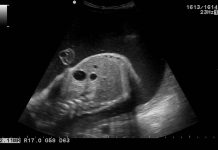In spite of the joys that motherhood offers, there are many aspects that can leave one baffled like the feeding chart. One such aspect is breastfeeding newborns and how much to breastfeed them. There is no such thing as overfeeding a baby. The mother wants the baby to grow into a strong and happy child. However, there is indeed a thin line between underfeeding and overfeeding.
Why is milk important for newborns and babies?
Breast milk provides the ideal nutrition for newborns and babies. It is a nearly perfect mix of vitamins, proteins, and fats – everything the baby needs to grow. It is all provided in a form more easily digested than infant formula. Breast milk contains antibodies that help the baby fight off viruses and bacteria.
It is strongly recommended to breastfeed exclusively (no formula, juice, or water) for 6 months. After 6 months complementary feeding is started.
Baby feeding chart for the following age groups
Newborn
The rooting reflex will help the newborn turn toward a nipple to find nourishment. Feed them only breast milk. The digestive tract is still developing, so solid food is off-limits for now. Mothers breastfeeding the baby are advised to make wise lifestyle choices. Whatever the mother eats or drinks will pass on to the baby through the milk. Make sure the newborn is fed every 2-3 hours.
1-3 months
Exclusively breastfeed the baby. Around 8-10 feedings per day or an on-demand module of feeding. Feed after each 3-4 hours. Avoid other feedings to the baby apart from breast milk. However, as the baby grows older, they sleep longer. By the time the third or fourth month arrives, it’s seen that mealtimes will automatically come down. The breastfeeding baby will need only 6 to 8 servings of breastmilk.
4-6 months
Breast milk and a little gradual transition to simple solid foods but it’s not necessary. Till 6 months you should exclusively breastfeed. Avoid feeding more than 6 times a day. Look for the baby showing signs of solid foods, then start cereal solid food. Make sure not to overfeed with solid food.
6-9 months
As the baby responds to solid food then ensure that the baby continues to get the taste of a variety of solid foods. Either pureed or soft-cooked and typically bland. Pureed fruits and vegetables can steadily be given in order to keep up with the baby’s growing bodily needs. More cereal servings per day, up to 3 times a day for better effect. Strike a balance between feeding breastmilk and solid foods. Also, introduce meats and beans.
9-12 months
Start with simple solid foods and foods with combinations and textures such as juices. Make sure to restrict the amount. Limits breastfeeding to 2-3 feeds. Feed with infant cereal, fruits or vegetables, meats or beans, dairy such as cheese or yogurt for 5-6 feedings per day.
After 12 months
Finally, the kid turns 1. As the kid increasingly transitions to solid foods, the proud mother can happily look for signs which ensure that the baby is growing up. For one, the baby will suddenly feel the need to put whatever they find in their grasp into their mouths. As dangerous as it sounds, it sure is a positive sign that the baby is craving varied foods now. The baby will also make cute little chewing gestures, and try and pick up whatever is around. All these signs and more are reminders that the baby is growing up.
Signs that the baby wants to eat more
The baby will definitely cry and remain cranky. Signs such as restlessness, keeping the mouth open, sucking on things such as fingers and fists are all signs that the baby wants to eat more.
Signs that the baby may have enough food
As a natural instinct, the baby will close its mouth, turn away its head and plain reject the tries to feed them when they have had enough to eat.
Conclusion
Remember to follow the instinct when it comes to feeding the child. Not to mention, follow a routine to ensure that the child never goes hungry. Keep the child healthy and strong for the future.
References –
- baby feeding chart: an age-by-age guide to feeding your baby | BabyCenter
- baby feeding chart: how much and when to feed infants the first year | parents













